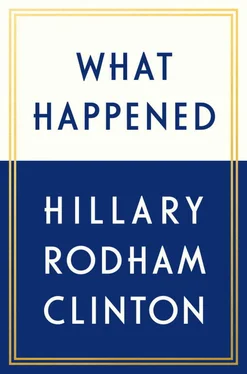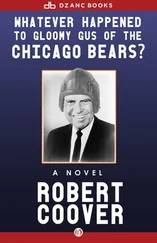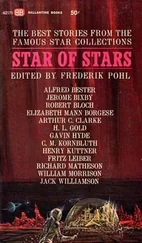This is one of the mistakes I made that you’ll read about in this book. I’ve tried to give an honest accounting of when I got it wrong, where I fell short, and what I wish I could go back and do differently. This isn’t easy or fun. My mistakes burn me up inside. But as one of my favorite poets, Mary Oliver, says, while our mistakes make us want to cry, the world doesn’t need more of that.
The truth is, everyone’s flawed. That’s the nature of human beings. But our mistakes alone shouldn’t define us. We should be judged by the totality of our work and life. Many problems don’t have either/or answers, and a good decision today may not look as good ten or twenty years later through the lens of new conditions. When you’re in politics, this gets more complicated. We all want—and the political press demands—a “story line,” which tends to cast people as either saints or sinners. You’re either revered or reviled. And there’s no juicier political story than the saint who gets unmasked as a sinner. A two-dimensional cartoon is easier to digest than a fully formed person.
For a candidate, a leader, or anyone, really, the question is not “Are you flawed?” It’s “What do you do about your flaws?” Do you learn from your mistakes so you can do and be better in the future? Or do you reject the hard work of self-improvement and instead tear others down so you can assert they’re as bad or worse than you are?
I’ve always tried to do the former. And, by and large, so has our country, with our long march toward a more perfect union.
But Donald Trump does the latter. Instead of admitting mistakes, he lashes out, demeans, and insults others—often projecting by accusing others of doing what he himself has done or is about to do. So if he knows that the Donald J. Trump Foundation is little more than a personal piggy bank, he’ll turn around and accuse, with no evidence, the well-respected Clinton Foundation of being corrupt. There’s a method to this madness. For Trump, if everyone’s down in the mud with him, then he’s no dirtier than anyone else. He doesn’t have to do better if everyone else does worse. I think that’s why he seems to relish humiliating people around him. And it’s why he must have been delighted when Marco Rubio tried to match him in slinging crude personal insults during the primaries. Of course, it hurt Rubio much more than Trump. As Bill likes to say, never wrestle a pig in the mud. They have cloven hooves, which give them superior traction, and they love getting dirty. Sadly, Trump’s strategy works. When people start believing that all politicians are liars and crooks, the truly corrupt escape scrutiny, and cynicism grows.
But I’m getting ahead of myself. Back to 2014, and deciding to run for President.
We’ve talked about my work at the foundation, my book, and my speeches, but by far the best part about my life after government—and probably the most compelling reason not to run—was being a grandmother. I loved it even more than I’d expected. Bill and I found ourselves looking for any excuse to drive down to Manhattan so we could drop by Chelsea and Marc’s and see little Charlotte, who was born that September. We became the world’s most enthusiastic babysitters, book readers, and playmates. We were doubly blessed when Aidan arrived in June 2016.
Running for President again would mean putting all this—my wonderful new life—on hold and climbing back on the high wire of national politics. I wasn’t sure I was ready to do that.
=====
My family was incredibly supportive. If I wanted to run, they would be there for me 100 percent. Chelsea had campaigned relentlessly in 2008, becoming a superb surrogate and sounding board for me. Bill knows more than almost anyone alive about what it takes to be President. He was convinced I was the best person for the job and strenuously denied that this was just a husband’s love talking.
Still, the obstacles were daunting. Yes, I had left the State Department with some of the highest approval ratings of anyone in public life—one poll from the Wall Street Journal and NBC News in January 2013 put me at 69 percent. I was also the most admired woman in the world, according to the annual Gallup poll. Ah, the good old days.
But I knew that my high approval rating was partly because Republicans had been willing to work with me when I was Secretary and praised my service. They had trained their fire on President Obama and largely left me alone. Also, the press corps covering me in those years genuinely cared about the work of diplomacy and the issues I dealt with, which meant the news coverage of my work was substantive and, for the most part, accurate. I knew it would be different if I ran for President again. And as Bill said—and history supported—the country’s perennial desire for change would make it hard for any Democrat to win, especially one like me who was closely tied to the current administration.
In 2014, President Obama’s approval rating was stuck in the low 40s. Despite the administration’s best efforts, the economic recovery was still anemic, with wages and real incomes stagnating for most Americans. The administration had botched the rollout of the new health care marketplaces, a centerpiece of the President’s signature legislative accomplishment, the Affordable Care Act. A new terrorist group, ISIS, was seizing territory in Iraq and Syria and beheading civilians live on the internet. There was even a terrifying Ebola epidemic in Africa that many Americans worried would jump to the United States. Thankfully, the Obama administration reacted swiftly to shore up our public health defenses and support Ebola response efforts in West Africa. Despite the facts, conservative partisans warned breathlessly—and with zero evidence—that ISIS terrorists would sneak across our southern border and bring Ebola with them. It was a right-wing conspiracy theory trifecta.
In the run-up to the 2014 midterms, Bill and I both campaigned hard across the country for endangered Democratic incumbents and competitive challengers. Late at night, we’d compare notes about the anger, resentment, and cynicism we were seeing, and the vicious Republican attacks fueling it.
For years, GOP leaders had stoked the public’s fears and disappointments. They were willing to sabotage the government in order to block President Obama’s agenda. For them, dysfunction wasn’t a bug, it was a feature. They knew that the worse Washington looked, the more voters would reject the idea that government could ever be an effective force for progress. They could stop most good things from happening and then be rewarded because nothing good was happening. When something good did happen, such as expanding health care, they would focus on tearing it down, rather than making it better. With many of their voters getting their news from partisan sources, they had found a way to be consistently rewarded for creating the gridlock voters say they hate.
The success of this strategy was becoming evident. In 2014, in Georgia and North Carolina, I campaigned for two smart, talented, independent-minded candidates who should have had a good chance to win: Michelle Nunn and Senator Kay Hagan. Both races were tight up until the end. But days before the election, a savvy Georgia political observer confided to me that he’d seen private polling that showed Nunn and other Democrats cratering. Republicans were using fears about ISIS and Ebola to scare people and raise questions about whether a Democrat, especially a woman, could really be tough enough on national security.
In several states, Republicans ran an ad mixing images of Ebola responders in hazmat suits with photos of President Obama playing golf. It’s ironic to remember that now, with Donald Trump spending about 20 percent of his new presidency at his own luxury golf clubs. I sometimes wonder: If you add together his time spent on golf, Twitter, and cable news, what’s left?
Читать дальше












